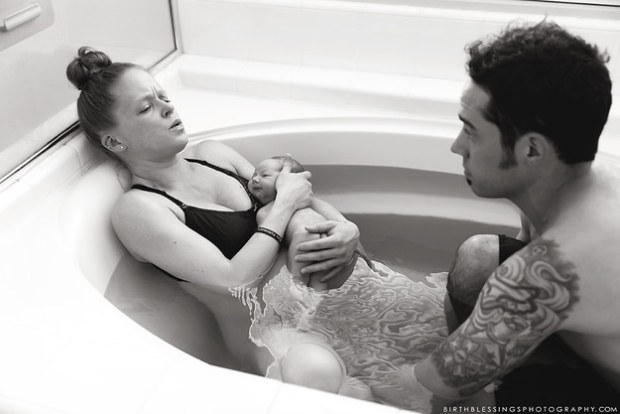 Giving birth to your child doesn’t always have to be done in the conventional half-lying, half-sitting position. There are alternative birthing methods. One of them is the “water birth,” or giving birth while squatting in a large tub of warm water. There are basically two variations to this method. Some mothers opt to do the entire birthing process in water, from labor to delivery, while others prefer immersion in water only during labor.
Giving birth to your child doesn’t always have to be done in the conventional half-lying, half-sitting position. There are alternative birthing methods. One of them is the “water birth,” or giving birth while squatting in a large tub of warm water. There are basically two variations to this method. Some mothers opt to do the entire birthing process in water, from labor to delivery, while others prefer immersion in water only during labor.
While a water birth has certain advantages, it’s not for everyone. If you’re expecting a baby, learn this method’s advantages and limitations before deciding if it’s the right birthing method for you.
Advantages
1. Reduces pain and stress. Mothers in labor are typically calmed and relaxed by immersion in warm water, to the point of easing their labor pains. Stress and anxiety typically raise a mother’s blood pressure increase, adding to her pain. But a water birth helps reduce the stress, and even helps a mother’s body create pain-inhibiting endorphins.
2. Relaxes tired muscles. The warm water specifically relaxes overworked muscles, especially the backside and abdominal muscles.
3. Allows more flexibility. When immersed in it, the human body’s natural buoyancy in water makes it easy for a mother to give birth in nearly any position. Water acts as a sort of flexible support, allowing mothers to concentrate more fully on the act of giving birth.
4. Protects the perineum. In childbirth, some injury to the perineum or pubic and anal areas are sustained. Immersion in water, however, causes the whole perineum to relax. This reduces muscle tearing and painful uterine contractions.
Limitations and Disadvantages
1. Requires a healthy and reasonably fit mother. Immersion in water becomes bothersome if the mother needs to be monitored closely due to pre-existing (and dangerous) health conditions. For instance, pregnant women with hypertension (i.e., pre-eclampsia), herpes, diabetes, bacteremia (having toxins in the blood), or a history of excessive bleeding or severe reproductive system infections should not undergo a water birth. If and when complications arise during labor, doctors will need immediate access to a woman’s body or the quick means to transfer her to surgery.
 2. Requires normal, single-birth pregnancy. Unfortunately, water births are not recommended for mothers giving birth to more than one baby (e.g., twins, triplets) and breech babies (infants that have not naturally turned their heads toward the birth canal). These cases require constant physical supervision from doctors and midwives (i.e., reaching into the birth canal to move or pull out the baby). Having the mother immersed in water would not be a practical arrangement.
2. Requires normal, single-birth pregnancy. Unfortunately, water births are not recommended for mothers giving birth to more than one baby (e.g., twins, triplets) and breech babies (infants that have not naturally turned their heads toward the birth canal). These cases require constant physical supervision from doctors and midwives (i.e., reaching into the birth canal to move or pull out the baby). Having the mother immersed in water would not be a practical arrangement.
Another example of a problematic pregnancy is one where the child accidentally inhales meconium (meconium aspiration syndrome). Meconium is a newborn infant’s first bowel movement (which is liquid), usually expelled into the amniotic fluid right before birth , during labor, or after birth. In severe cases, doctors will have to suction the meconium out of the child to prevent respiratory distress and infection—so a water birth is not possible.
3. Poses some risk to umbilical cord. In a water birth, the baby surfaces rather quickly. If the baby’s umbilical cord is short and the birth is not assisted properly, the cord may snap, causing injury to both mother and child. Midwives with experience in water births are needed.







I cant have a doula, therefore i can have a hospital water birth? Doula fees are not covered with medical insurance because she is not medically trained. I wouldn’t mind having her if there is a way of ensuring a doula can qualify for insurance coverage. What can be done about this predicament?